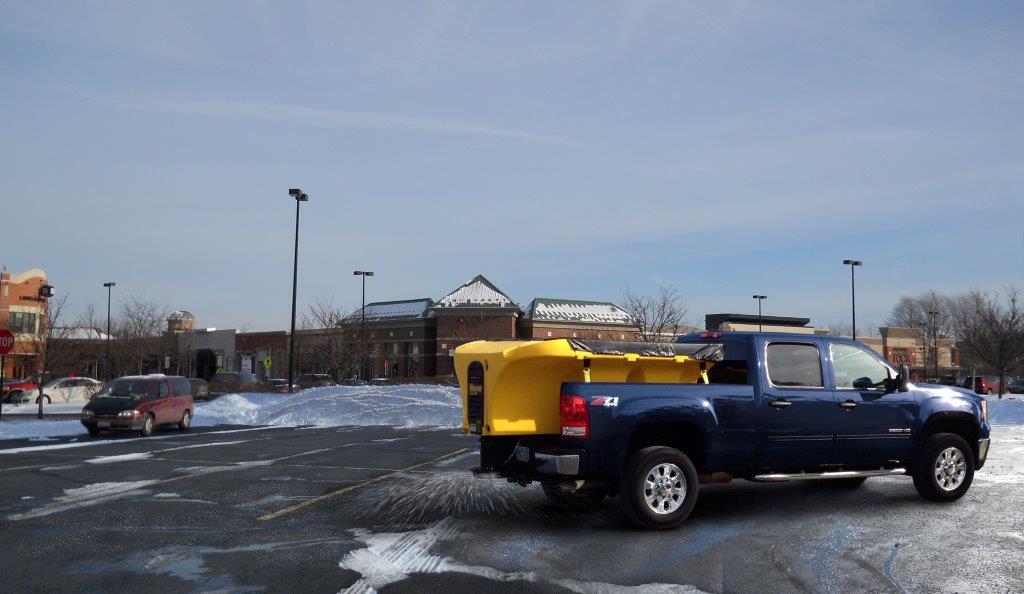Even the most seasoned ice and snow remediation professionals need a refresher course now and then. With winter right around the corner, you need to be on top of your game.
More than 115,000 people are injured and more than 1,000 are killed each winter in the United States on snowy or icy roads.
[1] Road salting and effective plowing can reduce crashes and injuries by as much as 88 percent. The economic impact of snow-related road, business and other facility closures far outweighs the money spent on timely snow and ice removal. Did you know that deicing pays for itself within the first 25 minutes of applying salt?
Whether you use ice melting compounds to clear snow and ice from walks, drives and entrances near public buildings, or you’re responsible for clearing a vast network of roads, you need to know the de-icing chemicals and compounds that are available. With more than 100 brands available on the market, it can be a daunting task indeed.
De-icing materials work in much the same way, but each chemical does have its own features and benefits. Performance is often based on the lowest melting point temperature in the de-icing compound as well as the speed needed to melt the ice or snow.
 Commonly Used Materials
Commonly Used Materials
While the number of brands of de-icing materials has grown substantially of late, the list of commonly used materials in their formulation is only about a dozen or so long. This includes naturally occurring salts such as sodium chloride, calcium chloride, magnesium chloride and potassium chloride. Both rock salt and calcium chloride are used on walkways and around facilities, while rock salt is perhaps the most common road surface treatment.
Other common road treatment and de-icing compounds might include substances like urea, sodium acetate, potassium acetate, calcium magnesium acetate, ammonium nitrate ammonium sulfate and various blend with or without abrasives, Brines, agricultural products and other proprietary materials may also be used.
What Should I Use?
The only trouble is that many of the packaged products don’t list the chemical composition of the de-icer, which leads to some confusion over use. And there are times when using the wrong compound actually makes the situation worse. So you always need to check with your supplier to find out exactly what materials are being used in the de-icing compound.
De-icing materials react with snow and ice to form a layer of liquid solution that has a freezing point below 32 degrees F, melting ice or preventing it from forming. Elements in the compound attract moisture from the melt to form a brine that generates heat, which in turn melts the ice.
When Should I Apply?
That means the de-icing compound has to rest on the pavement in order to be effective. Once it sits on the pavement, it then spreads out to break the bond the ice or snow has. So de-icers should be applied proactively, ahead of an anticipated snow or ice event.
Applying these compounds ahead of the event, also keeps ice and snow from building up, which in turn makes streets and surfaces easier to plow and maintain. Consider de-icing the first step in a series of operations in your snow or ice remediation strategy. When you prevent the bonding of snow and ice to road surfaces, you will use less chemicals, which helps with your budget, while also being more environmentally friendly.
Agricultural byproducts, such as fertilizer, refined corn carbohydrate, beet juice and corn wet milling products work in a similar way, without forming a brine, Soluble in water, they create a solution that acts by depressing the freezing point of snow and ice.
So before you by a de-icing compound, you should analyze the performance of de-icing compounds, starting with the range of temperatures that are achieved within 15 to 20 minutes of application. Other factors to consider are the amount of material required, the duration of melting action, ease of handling and application, and the environmental impact, among other considerations. You also need to know the the differences and advantages and disadvantages of granulars versus solids, and how they can be most effectively used.
Would you like to know more?
Visit
http://info.meyerproducts.com/de-icingguide to get a copy of “A Strategic Guide to De-Icing for Contractors or Municipalities” in your hands.
[1] The Salt Institute.
The Snowfighters Handbook – A Practical Guide for Snow and Ice Control, 2013